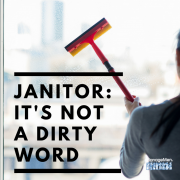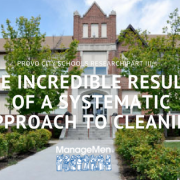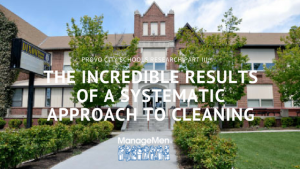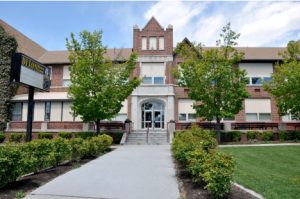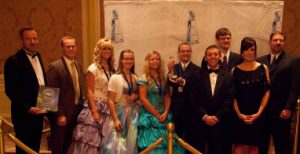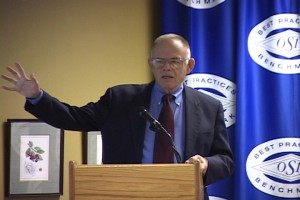Custodial Training for Different Learning Styles
In few occupations will you find a more diverse group of workers than the commercial cleaning industry. And while it’s one of the most labor intensive industries in the world, it’s one that is often recognized for its lack of professionalism, inefficiencies and low morale.
We want to change that.
Who is cleaning? Everyone, basically.
Every building needs cleaned and often doesn’t require workers to speak English, so it’s an easy point of entry for individuals looking to begin their lives in the U.S. Custodial work can also be great for people with physical or mental disabilities. Organizations like Goodwill and our friends at the Los Angeles Habilitation House (LAHH) offer programs to provide career opportunities in cleaning to individuals with disabilities.
Custodial workers also represent a variety of age ranges. From a young person who gets their start in the industry as their first job, to an older person who either has been a custodian for several decades (or maybe started cleaning to escape the monotony of retirement), most custodial departments have workers representing several different age groups and generations.
All of these differences can make training a challenge. Fortunately, even though teams are very different, there are similarities to the way people learn. And when you develop a consistent approach to training, you improve the consistency of the cleanliness being performed. Win!
Types of learning styles
Depending on who you ask, there can be as many as eight to 10 different learning styles. For the sake of simplicity, we’ll refer to the VARK model, introduced by Neil Fleming in the late 80s.
According to the VARK model, people best learn according to one of the following four types:
- Visual (pictures, diagrams)
- Auditory (lectures, discussion)
- Reading/writing (text books, note-taking)
- Kinesthetic (experiments and hands-on activities)
When training custodial workers, it can be helpful to have these types of learning styles in mind to make sure workers are learning—and retaining—as much information as possible.
What’s happening at LAHH
LAHH has built its business on training, believing that only through effective training and education can the organization fulfill its commitment to helping its team members and employees realize their full potential in the building services field. It has a comprehensive training system that ensures workers receive information in a variety of different ways, to accommodate different learning styles and their specific disabilities.
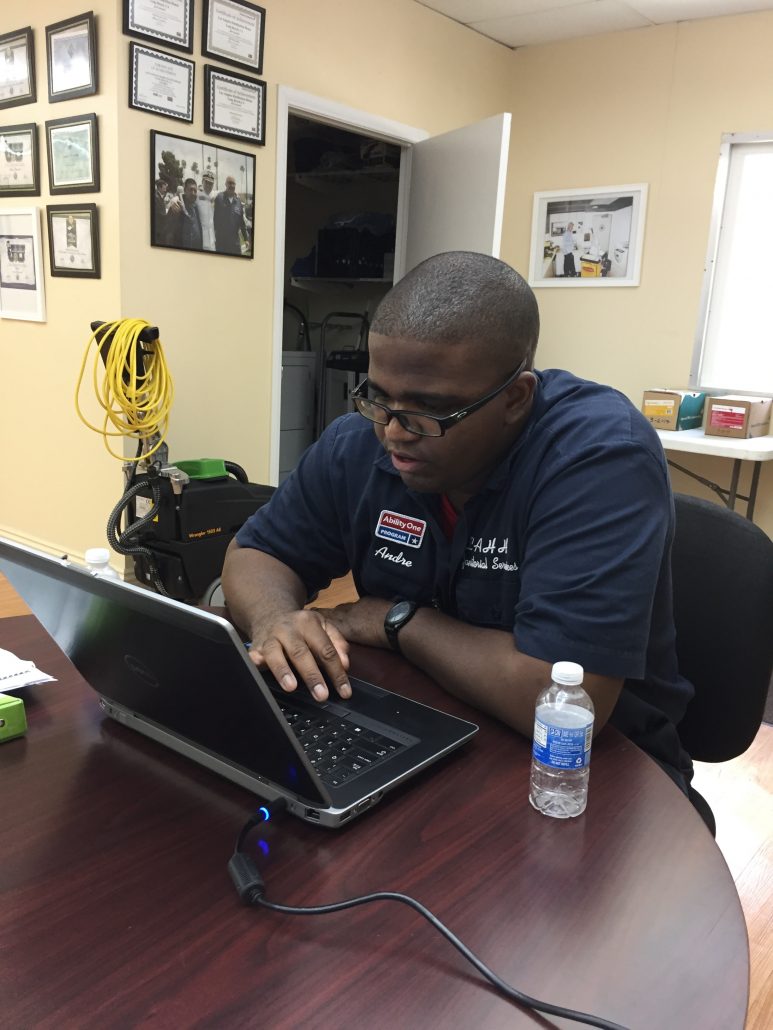
A custodial worker at LAHH takes an online course through ManageMen.
When a worker first joins LAHH, they receive extensive training called Boot Camp, which is provided in a classroom setting using ManageMen’s certification courses. This format enables the (OS1) trainer to see the unique strengths of each employee and tailor sessions and materials to their specific need. It also allows them to move through the (OS1) process using the (OS1) Boot Camp Playbook, at a speed that is appropriate to each student’s learning ability.
Materials presented in the Boot Camp material are very visually heavy, accommodating visual learners and readers who prefer to read through the text. Presenting the material in a classroom format helps auditory learners and systems are then tested to accommodate kinesthetic learners.
How online learning simplifies learning and allows workers to move at their own pace
We’ve been piloting a new online learning system that enables custodial workers to move at their own pace, utilizing a variety of materials presented in different forms to improve the cleaning knowledge workers retain. Covering everything from the basics of microbiology to specific steps for cleaning, the online program offers greater flexibility because it can take place anywhere, at any time.
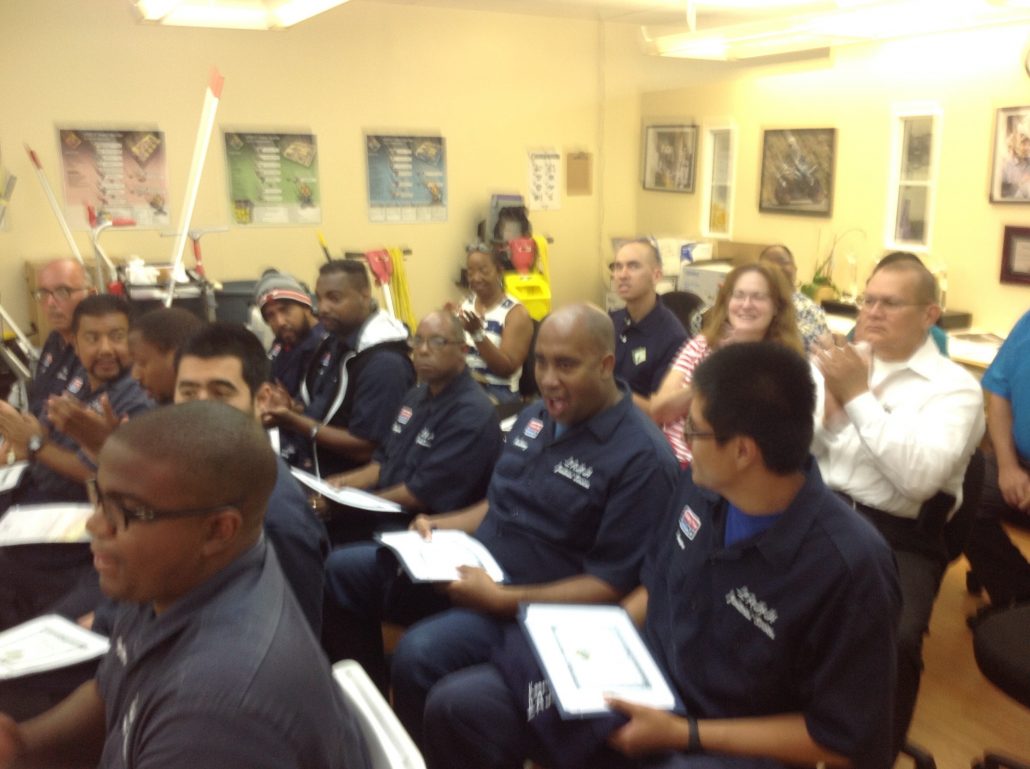
A new class of graduates have successfully completed their certification.
Seeing the value online training would provide to its workers, LAHH was one of the first to test the online educational platform. LAHH employees were provided with a computer and were shown how to log onto the online Janitor University portal. Through easily navigable prompts, each user was guided through the training curriculum specific to their assignment. The curriculum is presented in the form of videos and slides. LAHH also holds a bi-weekly classroom training to supplement the online modules, but the online system made it easy for team members to guide themselves through the coursework at their own pace. Some users still required the assistance of a mentor/coach or family member, but most employees have been able to navigate the system on their own.
“We’ve found the video and all the educational material, such as the Playbook, scouting report and (OS1)ian language offered in the online system to be very effective for training our employees,” said Guido Piccarolo, CEO. “Our team can access the video and the material from their own devices and it has been very effective in helping them learn and retain the information.”
Looking for a consistent level of clean? Training matters.
When it comes to training custodial workers, you want to provide a consistent curriculum so you know that everyone receives the same information. Contrary to popular belief, you can’t just throw a mop into someone’s hands and expect them to know what to do. You can’t also depend on whomever is on duty to just “show them” what to do.
If you want to improve the levels of cleanliness in your buildings, a good first step is to look at the way your training custodial workers. Make sure they are all being trained in the same manner, using a variety of different methods to appeal to different learning styles.
“It’s all to do with the training: you can do a lot if you’re properly trained.” Queen Elizabeth II



